Mauro De Bettio
TWO DOCUMENTARY PROJECTS
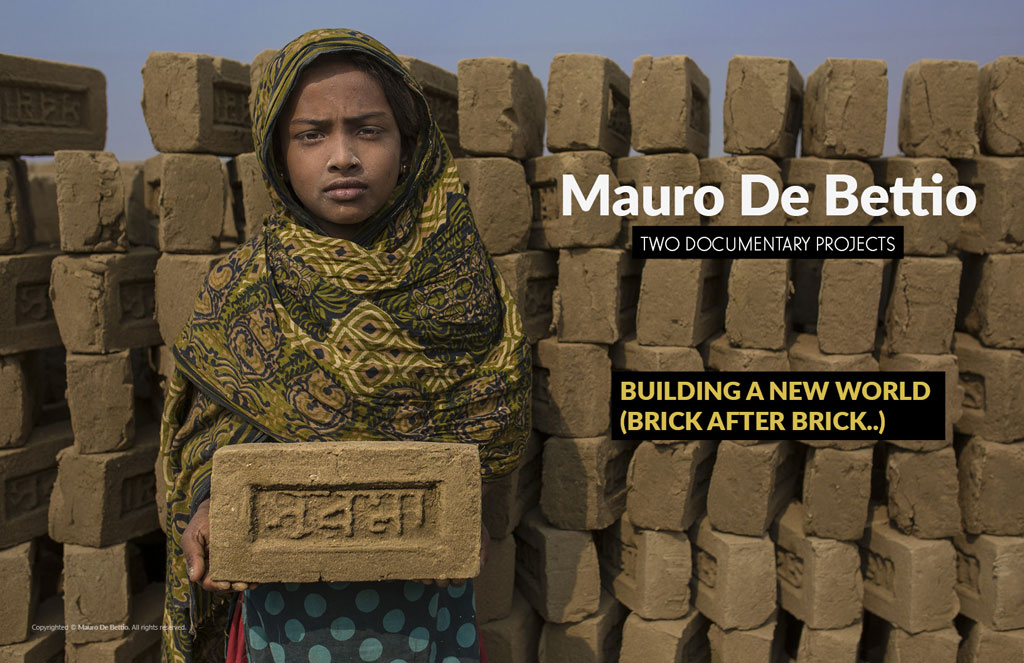
Mauro De Bettio
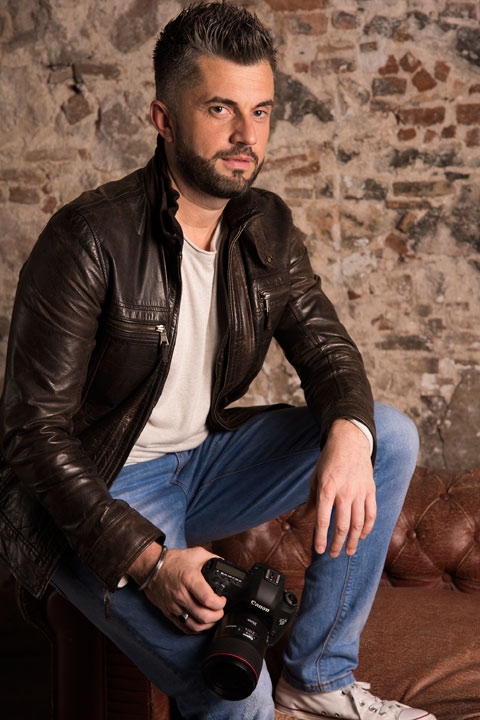
Mauro De Bettio
Born and raised in a little village in the Italian Alps, now based in Barcelona, Mauro had from a young age the desire to tell. He discovered that the camera was the right tool for him, the eye through which he could speak to the world. An instrument that began to walk by his side towards a long journey of discovery.
Definitely, to grow by himself, without the influence of schools, courses and lessons have slowed down the process of technical knowledge, but because of this he learned his own way of seeing and been formed and shaped by the environment and the people who surrounded him in his long travels/trips.
“Although it is difficult to express, I think that the photograph represents my way of speaking and what I try to do through my language is to capture the sense of what I breathe and touch with my hands. Not only in appearance, but also, and especially, in the essence; trying to express nuances and subtleties contained in a single frame. I think that’s part of my personality and my work fully expresses what I am. My story, my soul”.
As a photographer, the only powerful medium to express and communicate he possess, then, is his camera. A tool that offers an infinite range of perception and interpretation, creating images that stimulate and provoke thoughts.
Mauro spent over a year working on several projects regarding social and human rights issues in India and Bangladesh. This curiosity for such different cultures and ways of living led him to the country’s most hidden corners to capture the emotion and trauma of suffering humanity of several individuals and their unique histories. He explored the fragile balance between those people and their environment in realities like ship breaking yards, leather and brick factories, transgender community and acid attack survivors.
“During my long trips I had the good fortune to meet great people and from each one of them, I absorbed something: happiness, joy, passions, and sometimes even anger, sadness and shame. Emotions that sometimes were like punches in the stomach that took my breath away.
I always feel a huge responsibility in finding the correct approach with people, to be able to properly explain with the images what they experience to others that are not aware of it.
Communication is always the first move/way to learn each other’s value, but sometimes even that is not necessary. Sometime smiles and glances are enough to gradually build a mutual trust and soon the mental and emotional barrier between me and the people I meet brakes almost immediately.
Despite often the conditions and situations in which I am are not easy, I always do my best to capture those smiles and joy. It’s extremely important for me to show those particular emotions because they represent their strength and resilience.
I am convinced It’s a source of inspiration for all of us because it shows that anything is possible when you face something with the hearth and the courage from within. The determination they show in the images I take is an extraordinary example of how every challenge can be converted into opportunity”.
Reproduce all these different moods into images is to evoke an emotion in someone else.
Draw public attention to real-life situations. Stop people and make them think.
His pictures are a visual story able to highlight unseen or ignored realities.
A vital tool that can help bring about social changes.
“Photography is a fantastic storytelling medium. Just ask yourself what story you want to tell and photography can bring you there”.
BUILDING A NEW WORLD (BRICK AFTER BRICK..)
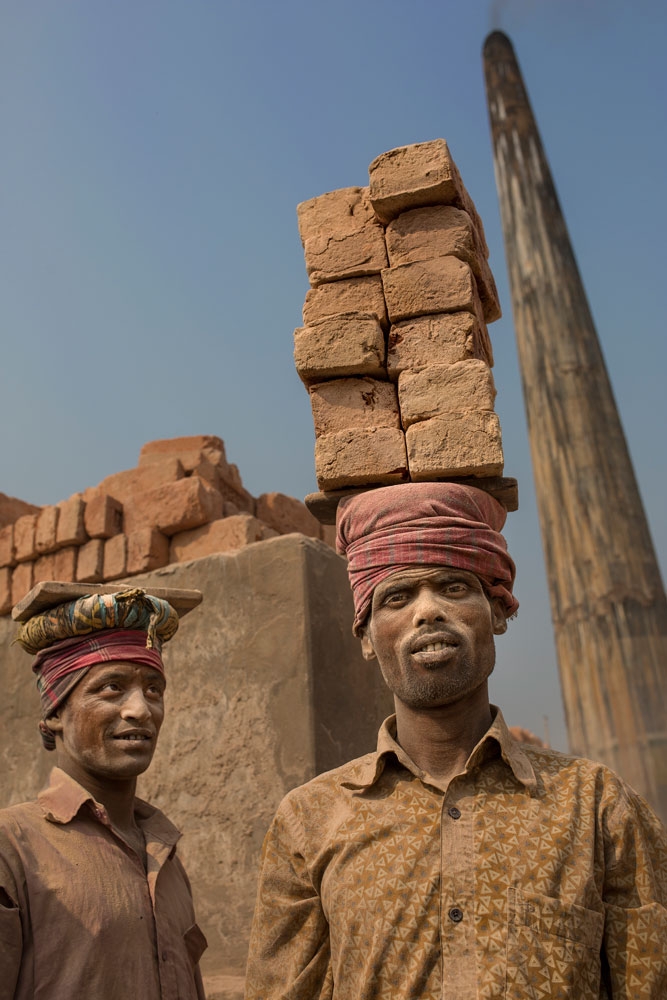
Copyrighted © Mauro De Bettio. All rights reserved.
It’s dusk.
Thick clouds of smoke hang in the horizon above tall and slender chimneys.
The smoke that comes out is dense, strong, black.
Seems like they’re ready to shoot a cannonball.
Then you get closer and closer till you begin to see them through the red dust.
If it weren’t for the aircraft contrails painted in the sky, the electrical cables that run along the bamboo poles and the echoes of the call for the morning prayer, you could have the feeling of living in the past. It’s like a scene from a long-gone age. Men and women, among the debris, walking in single file up and down the steps as if climbing a pyramid.
Toiling under the baking hot tropical sun, these lost souls are carrying out backbreaking and exhausting labor in the most perilous conditions through days that passes equal to one another. They walk barefoot in between the infernal heat that radiates the furnace, balancing huge stacks of bricks on top of their heads for 18 to 22 hours a day. There’s no time to eat or to bathe. They spend months without even see the color of their skin.
Because workers are paid according to the number of bricks they produce, the job attracts whole families, from the grandfather to the few years old grandson. They receive plastic coins for every load of carrying bricks; at the end they’ll be exchanged for real money. A pair of extra hands, even when they belong to children, are always useful to churn out millions of bricks to fuel a construction boom that shows no signs of abating.
The ecologically-fragile Bangladesh, with 150 million people, equal to the 50% of the United State’s population, but crammed into an area as big as Cuba, is constantly suffering from natural calamities. Each season cyclones, floods and creeping sea-level rise drive thousands of Bangladeshis from their villages. People from all over relocate here to work at one of the thousand brick factories, feeding their kilns and producing around 12million bricks a year.
This rural migration accounted for 60% population growth throughout the 1960s and 1970s. While this growth has slowed since that time, Dhaka continues to show steady growth, with estimates placing the 2020 population of almost 21 million, while 2030 may see as many as 28 million residents as the U.N. Is predicting. The fast-growing population has already put tremendous stress in the city, as evidenced by its high rates of poverty and future concerns include increasing congestion, a higher rate of unemployment, inadequate infrastructure, pollution, impossible demands for energy and water. All results in an overwhelming sense these mega cities will simply collapse.
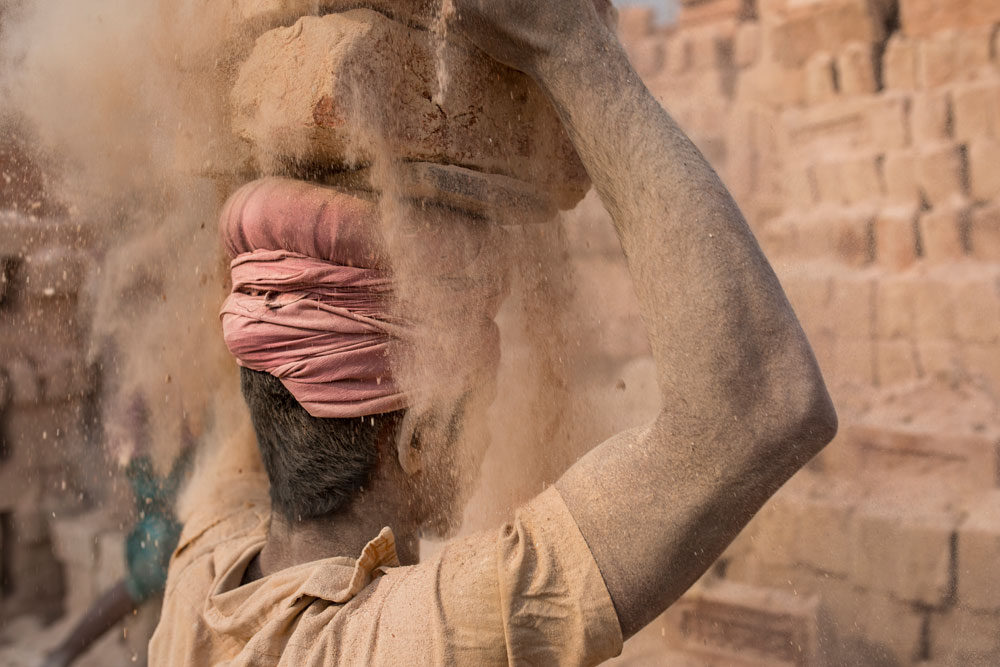
Copyrighted © Mauro De Bettio. All rights reserved.
Rahima, 19 years old, poses for a picture holding hands with her young child, together with brother and husband at the site of her work in Baliarpur, on the outskirts of Dhaka.
They moved here from their village in 2010 in search of work opportunities and a better standard of living, joining the nearly half-million migrants pouring into the capital every year. They could no longer support themselves with farming and they came attracted by lies and false promises.
“We want a decent home, the wedding I couldn’t have before, buy a TV, a goat and be able to give an education to our daughter”.
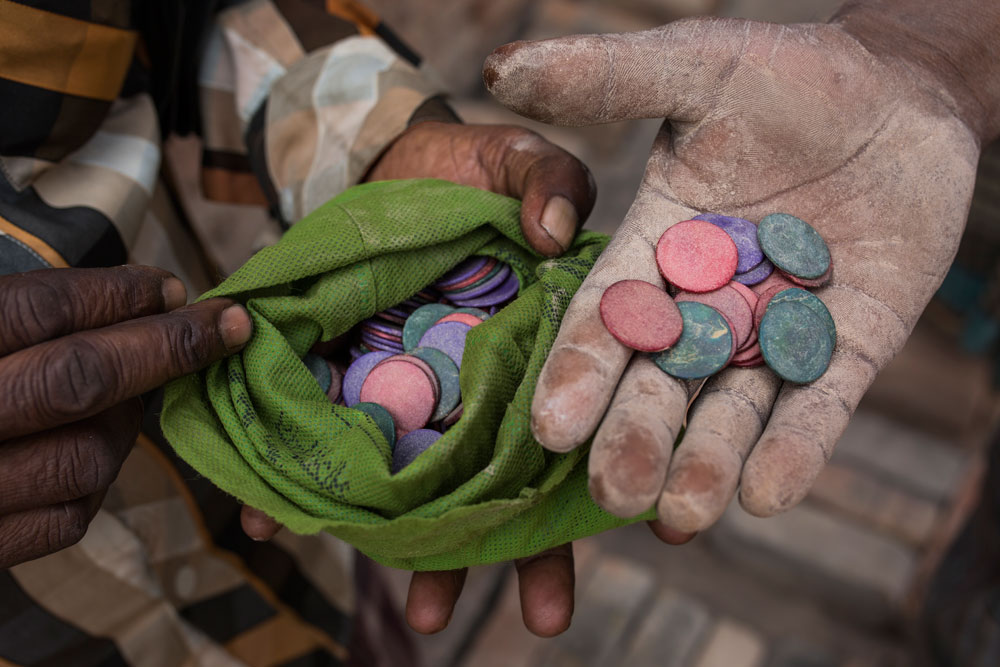
Copyrighted © Mauro De Bettio. All rights reserved.
Urban legends talk about making fortune in the big metropolis, but once arrived people got trapped in this ‘modern-day slavery’. Condemned to a lifetime of hardship to pay back debts to the same people who anticipated them a loan at usurious rates to reach their dream, none of them can escape. It’s a trap that locked them into a repayment cycle, which can effectuate indentured servitude, aggravated by a horrific abuse of minimum wage rates and health and safety regulations.
Despite the smoky clouds and this hell perspective, it’s still a source of inspiration to see their strength and resilience.
Empowered by the desire of a more decent life, they show an extraordinary example of redemption’s human rights.
Dhaka, the fastest growing mega city in the world, the future is here and it smells like coal.
Rahima’s family is just a drop of the river that is covered and rebuilding the new Bangladesh.
RUST AND SWEAT
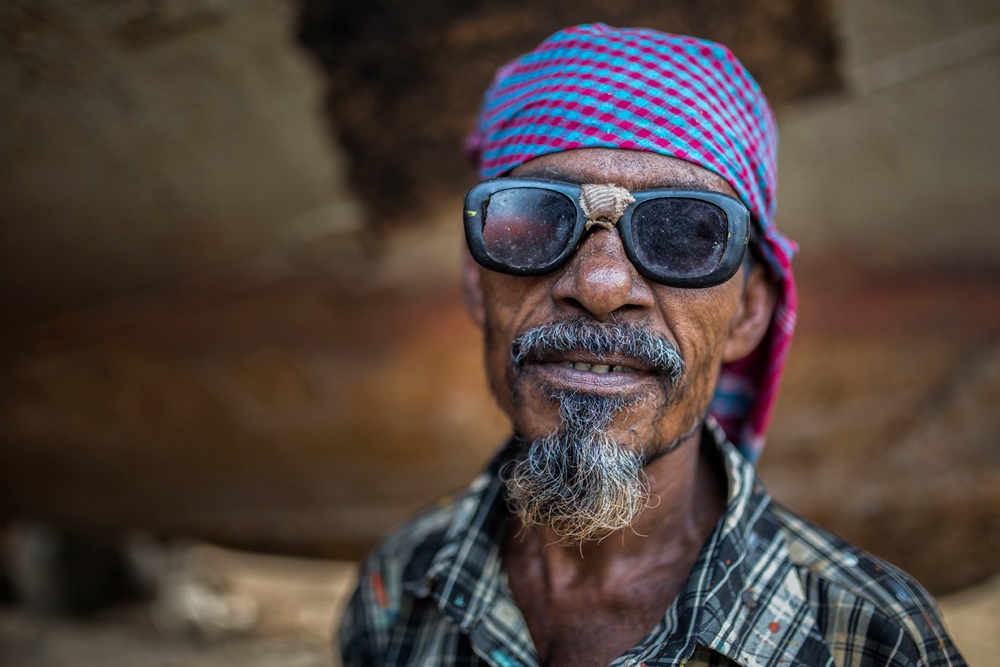
Copyrighted © Mauro De Bettio. All rights reserved.
At first I was observing them, sitting on a pier by the Sadar Ghat, the port of Dhaka.
Observing those huge and fascinating cetaceans from afar.
Those rusted carcasses lying between the mist, on the opposite bank of the Buriganga River.
One morning at sunrise, however, I made the decision to go over there.
There’s nothing better than a dozen of extra-sweet chai (that cost me six dental cavities in a few weeks), chatting, laughter and mandatory handshakes to get to know someone who for sure knows someone else who knows how to bring you to where you want to go.
A couple of hours later, I was in the labyrinth of shacks of Char Kaliganj slum and home to one of the largest shipyards in Asia.

Copyrighted © Mauro De Bettio. All rights reserved.
Now I could go deeper in the graveyard into the life of these people and look closely at those giant skeletons submerged with tireless workers intent on dismantling them.
Relentless like ants while attacking a sugar cube.
Air filled with the strong odor of diesel fuel, feet dipped in the mud, faces embraced by the cutting torch gas and hands that for years, or perhaps since forever, have been impregnated with oil and rust.
Up above, against the sun, the silhouette of funambulists strolling along the high sides of the ship decks. The only protection they can rely on is their own balance.
The noise is incredibly loud. Looks like time is marked by thousands of hammers banging incessantly against the bodies of these huge ships to remove the rust.
Rusty, old supertanker ships come to die in this place when their lives as vessels on the ocean expire. They have a lifespan of 25 to 30 years before corrosion, metal fatigue and a lack of parts render them uneconomical to run. Ship breaking allows the materials from the ship, especially steel, to be recycled and made into new products resurrecting and giving new life to these old mammoths.
Once the ship is driven right up onto the riverside, its liquids are siphoned out, including any remaining diesel fuel, engine oil, and firefighting chemicals, which are then resold.
Portions carelessly flow in the Buriganga River, the lifeline of the city, so that day by day it’s getting increasingly polluted and making life riskier for the people nearby.
After the ship has been reduced to a carcass, swarms of laborers start to use hammers and acetylene torches to tear huge pieces of metal apart from the vessel, until everything is removed and sold to salvage dealers: from enormous engines, batteries, generators, and miles of copper wiring to the crew bunks, portholes, lifeboats, and electronic dials on the bridge.
Everything is reused, including the last screw and bolt.
The work is extremely difficult, and low-paid workers face significant risks from the dangerous conditions and exposure to materials like asbestos and heavy metals.
It is considered one of the world’s most dangerous industries and very labor-intensive.
Shipbreaking is a challenging process, due to the structural complexity of the ships and the environmental, safety and health issues involved.
Somebody lacks a finger, someone else an eye.
Many of them have hands and arms dotted with deep, jagged scars.
“Here we call them ship-tattoos” says Shihab (58) that is sitting close to me in a chai-shop.
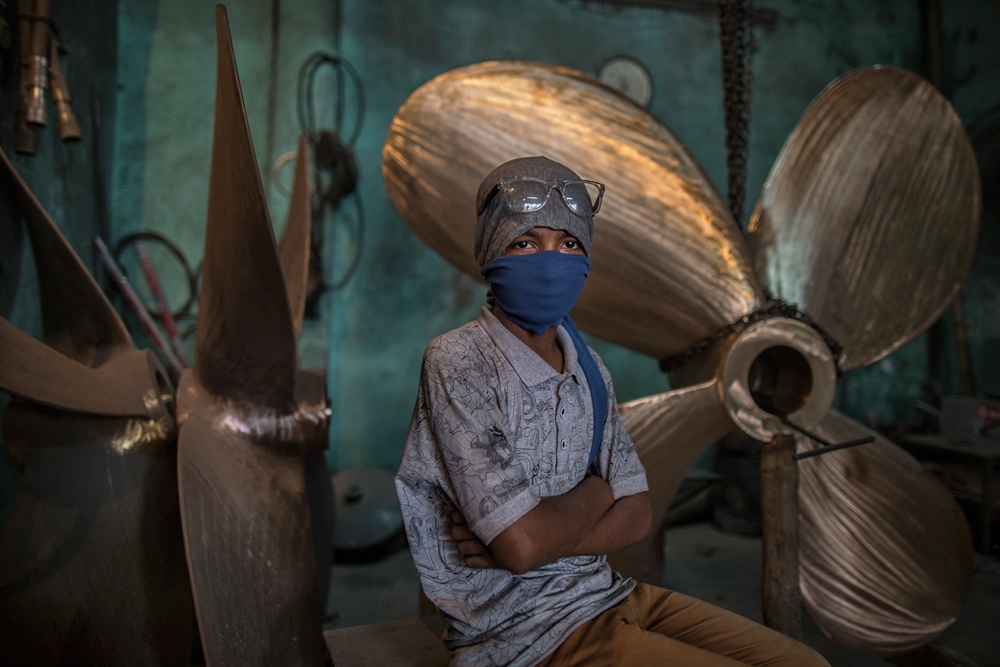
Copyrighted © Mauro De Bettio. All rights reserved.
“It sounds like a good business until one day you start counting your scars and you realize your body is full of them. The same scars that cover our land that is already soaked by poisons.”
“In your country you don’t let people pollute your land by breaking up ships on your beaches. Why is it fine for poor workers to risk their lives to dispose of your unwanted ships here?” he asks.
Char Kaliganj employ around 15 thousand souls like Shihab that work to both break down massive shipping vessels as well as creates new ships from the parts.
The majority lives in filthy and hazardous circumstances, but for them it is in any case a livelihood, an opportunity. They have skinny bodies. Bones barely covered by tendons and skin.
The age of laborers ranges from 8 to 80 and they all work together.
The work is hard, crude, dirty and dangerous, but it gives thousands of them employment and wages to feed their families. Children are missing out on formal education, but there aren’t any other options other than work for money and help their families.
Among the most unthinkable activities, the manufacturing of ship propellers is the one that impressed me the most.
First, bare hand molds are created with a compound made from sand and ash.
After being heated for a long time with blow torches and closed, inside is poured the liquid bronze obtained from the fusion of scraps of old propellers.
Amir (11) works here since he was 3 years old, manufacturing ship propellers from liquid bronze obtained from the fusion of scraps of old propellers: “I was born here and I work in this place on a daily basis. There are no days off or holidays and sometimes I miss school and my friends, but it is my job to help and take care of my family and I’m proud I can help my father to pay the agent who gave us the loan to buy our house.”

